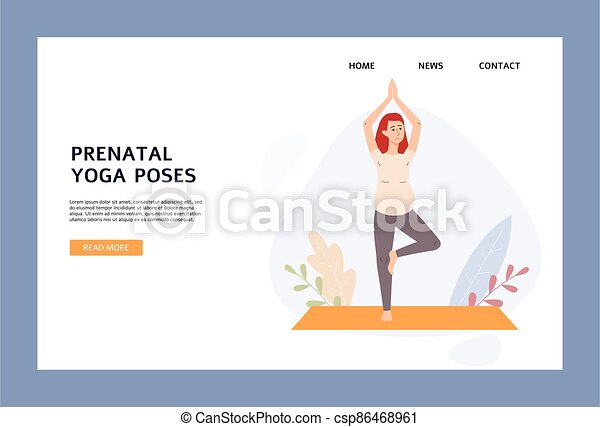
A beginner's class will cover basic poses such Tadasana. Side Angle. Forward Fold. After you have practiced these poses for a while, you will feel comfortable enough to move on to more advanced versions. Balancing exercises can seem intimidating for beginners. This article will help you to learn the basics. Find out how to balance in beginner yoga classes.
Tadasana
Tadasana is an important yoga pose for beginners, and it is a great way to practice mindfulness throughout the entire class. To get the best from this pose, keep your feet apart at hip width and bring your hips towards the waist. You will also need to keep your fingertips parallel to the bones of your pelvis and in line to your second toe. You should keep the pose in place for at least a few seconds before you move on to other poses. Eventually, you can move on to other poses, but keep your feet separate and move from one to another.
Tadasana has many benefits. Tadasana is a great starting pose as it shows how to align your body and use props to correct bad posture. Once your students have stayed in Tadasana, for at least one min, you can move on and do other poses. After a while you can plan a full Tadasana yoga sequence.
Forward Fold
Your spine and knees will be curled during your first Forward Fold class yoga lesson. Your thoracic curve is already in a kyphotic position, so the forward flexion you're asked to do will only slightly move it towards neutral. While most yoga instructors will encourage you to drop as far down as possible without bending the spine, your spine should be fully extended when you do so.

For beginners, a wall can help with your forward fold. You can rest your hands on the walls to help you keep your back straight. A wall support can also be helpful if you have tight hamstrings. You can also keep your knees flexible. After some practice, the wall support can be removed and you can practice the Forward Fold by yourself.
Side Angle
Side Angle yoga is something you should try if this is your first time. Many beginners find it difficult to perform this pose because their torsos are too tight. This can be overcome by placing your elbow on the front knee. This will relieve tension and strengthen your knees. This is a step-by–step guide for Side Angle Yoga for Beginners. Here are some tips to make side angle poses safer and more comfortable.
Extended Side Angle Poses: This pose opens the sides and energizes the spine. This pose will help strengthen your hips and legs. If you are unsure if you should start with this pose or not, then consider starting with Warrior II. Next comes Reverse Warrior II. And finally, Prayer Twist. It will surprise you at how flexible you can be! Side Angle yoga for beginners is sure to become your favorite!
Warrior 2,
Warrior 2 is a relatively simple yoga pose, but many beginners make alignment mistakes in this posture. Engage your core, draw your tailbone towards the ground and extend your spine to get the best out of this pose. Remain straight with your front leg. You can learn the correct way to do the warrior pose by following the instructions below. Next, you can try more difficult variations.
Warrior 2 is a great pose to increase balance and stamina. Your core muscles will be engaged and your thighs toned by holding your body straight up in the lunge position. You will also work your arms, lower back and shoulders in this pose. This pose strengthens your feet and ankles. Before attempting this pose, beginners should practice on a yoga pad. Below are some tips for improving your alignment.
Relaxation pose

The final relaxation pose should be taken at the end a beginner yoga class. They should place their hands on the floor and let their toes hang down. This position promotes surrender and allows the body and mind to settle into the earth. It should feel heavier than the earth. This pose can be used to calm the mind and body.
The triangle pose is a classic beginners' yoga pose, and can be very challenging depending on the level of the student. The knees should be placed hip-width apart in this pose. Your upper body should be stretched with your shoulder blades down and your spine extended. It is important that you take deep breaths. Once students are comfortable with this pose they can either try it out on their own or at home.
FAQ
How can you improve your mental or emotional health?
-
Exercise - Physical activity improves brain function and increases energy levels.
-
Sleep – A lot of sleep is good for stress and anxiety.
-
Nutrition - Healthy eating such as fruits, vegetables and meats will keep you healthy and energized.
-
Meditation - Regular meditation reduces stress and anxiety.
-
Socialization - Spending time in the company of friends and family keeps us happy.
Why is it so important that we improve our emotional health
Happiness and well-being are dependent on emotional health. You won't be able perform at your best if you aren't emotionally healthy. People with depression are often unable to work efficiently. You may also feel anxiety, panic attacks, insomnia and other symptoms. The good news about these conditions is that they can be successfully treated using medication and therapy.
How can I improve my mental health?
Everyone needs mental health, especially when we feel stressed at work, school, home, or family. The best way to improve your mental health is to exercise regularly, eat healthy food, sleep well, and spend quality time with loved ones. Exercise releases endorphins, which can make us happier. Eating healthy foods also helps our bodies function properly. A good night's sleep will give you energy throughout the day. Spending quality time with loved ones can improve our relationships and reduce stress.
Why is mental well-being important for students
Mental health is vital for students because they need to be able to focus on school and do well academically. If you don’t feel happy, you won’t do well in school. Students suffering from depression are more likely to miss class, which can lead them to get poor grades. This could result in students dropping out high school and possibly even college.
If you're struggling with depression, you should speak to your parents or teachers. They can help you get all the support you need.
It is important to understand that not everyone with depression needs medication. Talk therapy can be very effective for many people. Counselors are a good option if you want to get help.
What can I do to prevent mental health problems?
It is not easy to prevent mental health problems. Here are some tips:
-
Don't drink alcohol. It can alter your moods and increase your chances of developing depression.
-
Avoid drugs. Drugs can affect your brain chemistry and make you feel worse.
-
Get enough sleep. A lack of sleep can cause anxiety and depression.
-
Exercise regularly. Exercise is good for your mood and makes you feel happier.
-
Healthy foods are the best. Eating junk food can make you feel sluggish and unhappy.
-
Spend quality time with loved ones. Spending time with those you love can improve your mood.
-
Have fun! Have fun!
-
You should take breaks from social media. Social media sites can make it difficult to feel alone and lonely.
-
Be kind to yourself. Treat yourself nicely, even if you aren't feeling great.
-
Ask for help. If you're struggling to cope, ask for help. Talking with a friend or family member is a great way to get help.
-
Remember to be kind and gentle with yourself. Crying helps to relieve tension and stress. It does not necessarily mean that something is wrong.
-
Keep busy. Do something you enjoy.
-
Make sure you have good hygiene. A lack of hygiene can make you look unattractive and unclean.
-
Stay connected. Connecting with others will help you stay positive.
-
Learn how to relax. Meditation and yoga can be helpful in reducing stress.
-
Find meaning in what you do. Find meaning in your hobby or work can bring you fulfillment.
-
Be present in the moment. Concentrate on the present moment and you won't be so worried about the distant future.
-
Set goals. You can set goals to motivate yourself to reach them.
-
Do something kind for yourself. Doing something nice for yourself can boost your self-esteem.
-
Practice gratitude. Gratitude will help you appreciate all the positive things in your life.
-
Volunteer. Volunteering can be an enjoyable way to spend time and make a difference in the world.
-
Give back. Giving back can help you feel fulfilled.
-
Pay attention to warning signs. Do not hesitate to seek help if you notice changes in your behavior.
What does mental health have to do with our daily lives?
Everybody experiences mental illness at some time in their lives. The main difference between those who suffer from mental illness and others is that they don't seek help for it. Talk to someone if something feels wrong. There are many ways to deal with depression, anxiety, stress, etc., such as therapy, medication, exercise, diet, meditation, and other methods.
Statistics
- More than 40 million adults in the United States have an anxiety disorder, but less than 37% of people seek mental health treatment for their symptoms. (talkspace.com)
- It means no drinking any alcoholic beverages and no taking any drugs that aren't 100% natural.
- Appropriate nutrition and exercise are likely among the most efficacious and cost-effective positive mental health interventions. (ncbi.nlm.nih.gov)
- In any given year, an estimated 18.1% (43.6 million) of U.S. adults ages 18 years or older suffered from any mental illness, and 4.2% (9.8 million) (healthypeople.gov)
- Similarly, for positive mental health, there is likely to be substantial agreement about some typical components (e.g., resilience to stress) 6, and controversy about more atypical components (e.g., career consolidation). (ncbi.nlm.nih.gov)
External Links
How To
How to improve memory
Everyone hopes to be able recall more about memory. But unfortunately, memory loss is something that happens to us all at some point in time. In fact, more than half of Americans over 65 suffer from some form of dementia.
You have many options for improving your memory. Here are three simple steps you can try today:
-
Increase your intake of fruits and vegetables. Vegetables and fruit contain vitamins, minerals, antioxidants, fiber, and other phytochemicals that can improve brain function. They also contain essential nutrients that protect against neurological disorders.
-
Get enough sleep. Sleep deprivation has been linked to poor concentration and memory loss. Sleep well for seven to eight hours each night.
-
Go for a walk. Walking increases blood flow to the brain which can improve memory. Walking can help you lose weight, which will make you appear slimmer and healthier.